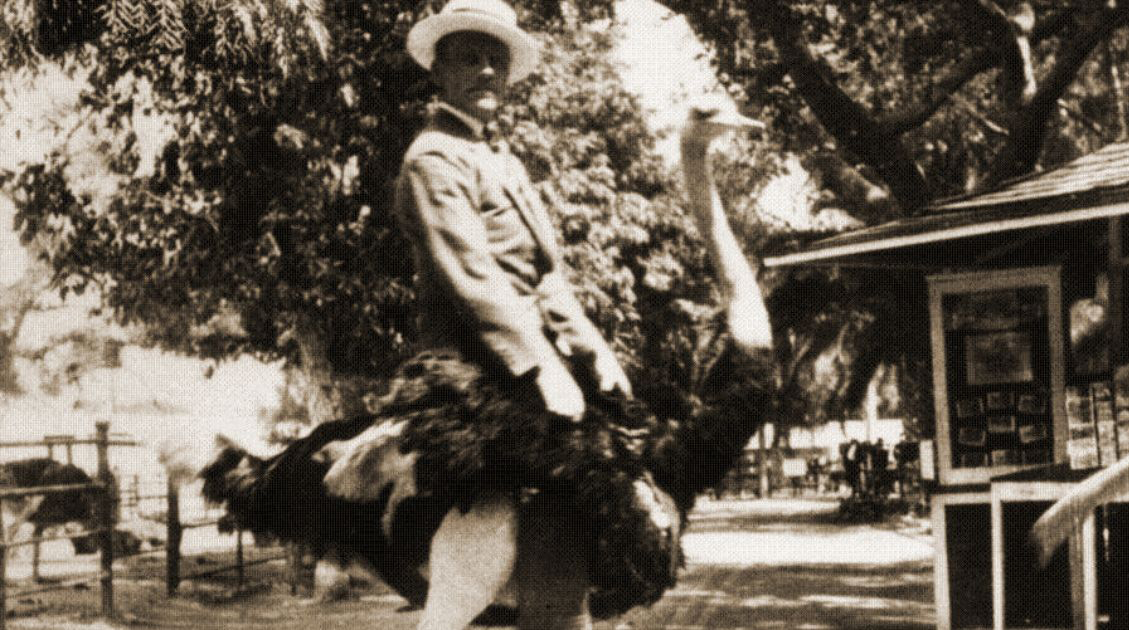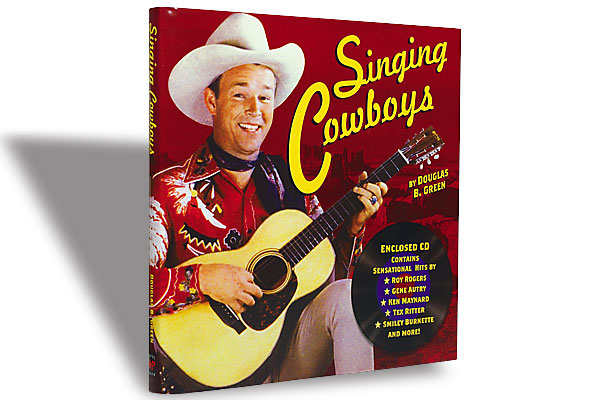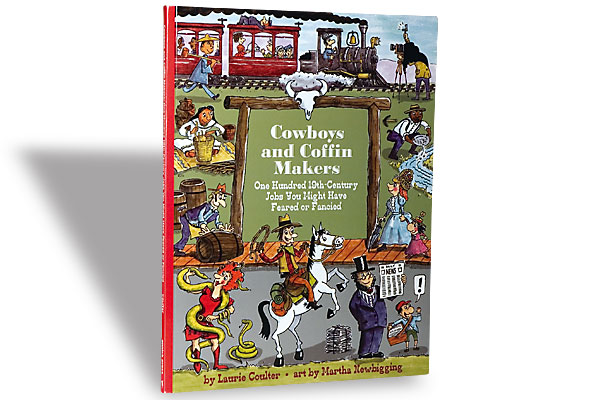
One of the most unusual yet lucrative types of ranching came into fashion around 1900 in Arizona’s Salt River Valley. With a head- ‘em-up, move –em-out, and a yippie-ti-yi-yay, cowboys, er, ostrichboys were actually herding flocks of funny-looking birds.
It wasn’t that the cattle business had fallen off so much, but rather that women’s fashions of the time dictated the wearing of ostrich feathers on hats and dresses. Those die-hard cattlemen who originally scoffed at such an enterprise no doubt re-considered when it was reported in 1910 that 4,023 ostriches were sheared of their feathers and the crop was valued at $1,365,000. Ostrich farms suddenly became as common as convenience stores are today.
The first ostriches arrived in Phoenix sometime around 1885. Prior to being shipped from California, their bald heads were covered with hoods to discourage escape and perhaps prevent sunburn. Of the two adults and eleven chicks that started the trim, only one male and one chick survived crossing the desert. Luckily, one was a male and the other, a female, and soon nature took its course.
Profit was immediate. One man paid more than $16,000 for 21 pairs of breeding birds and two years later he’d realized $31,000 from the sale of young chicks. Feathers were selling for around $75 a pound, and the birds kept growing ‘em as fast as ranch hands were plucking ‘em.
The ostriches required less water than did other types of livestock and whereas full-grown cattle ate from 30 to 60 pounds of alfalfa a day, an ostrich ate only 4 pounds.
Ostriches also sold for more than cows—a young chick cost $100 and a 4-year-old bird went for around $800.
They were monsters too. An ostrich could weigh from 300-400 pounds and stand 8-feet tall. They could leap easily over an 8-foot fence, run 60 miles an hour and take 25-foot strides. The bird had a brain the size of a pea, and sometimes thoughtlessly stepped on the valuable eggs. Hired hands carried long shepherd-like staffs to control the beasts while they gathered the eggs.
Ostriches provided the farmer with meat and eggs too. One ostrich egg was said to be equivalent to 33 hen’s eggs. The eggs tasted good but the meat was coarse and stringy.
The ostrich business was not without its hazards, they could kick like a mule and were known to stampede when so moved.
In 1914 a Mr. & Mrs. Rousseau were driving their buggy down McDowell Road when they came upon a herd of stampeding ostriches, running down the road in a cloud of dust. The birds ran over the top of the wagon, killing both people.
It was women’s styles that made the ostrich industry boom and she that giveth, can also be taken away. Women’s fashions were as fickle then as they are now, and in 1916, with the exception of fan dancers in burlesque shows, feathers were no longer in style. The business died as quickly as it had started.
Most of the birds were ground up, feathers and all, into fertilizer. Others, like the famous camels of an earlier era in Arizona, were turned loose to roam the desert.






